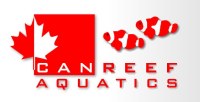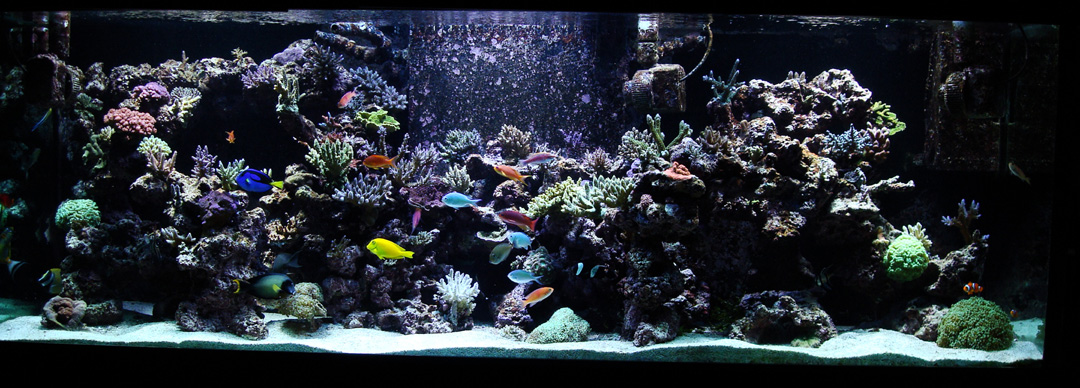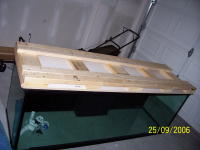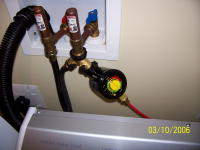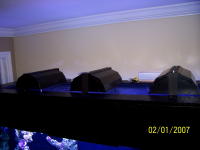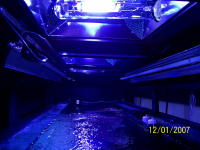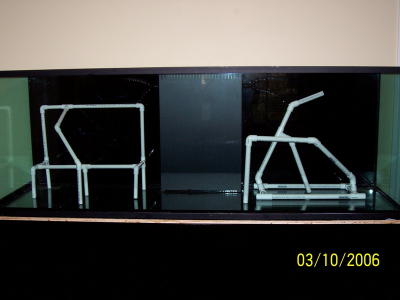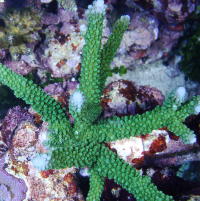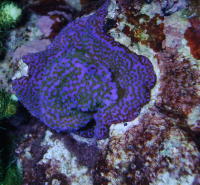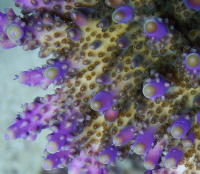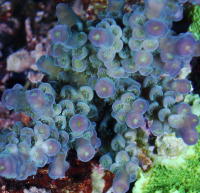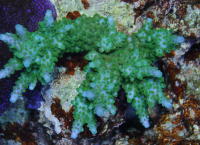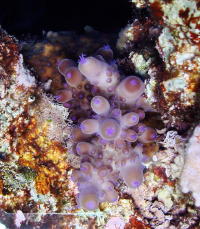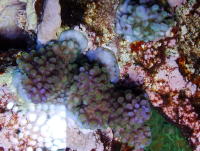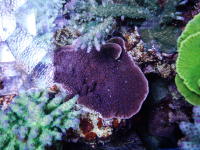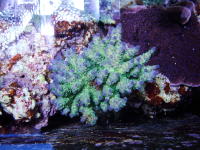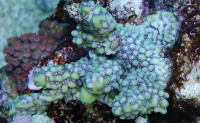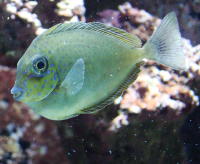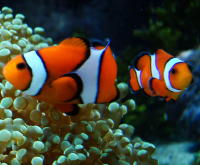| Main Menu |
|
Home
Bulletin Board Photo Gallery Recommend Us User CP Contact Us |
| Moderators |
|
Titus
Christy Doug Tony Brad |
|
|
Niloc16's 265 Gallon Reef Congratulations to Niloc16 for being selected as Canreef's Featured Tank of the Month for March 2008. Thanks, Colin, for sharing your system details with us!
Introduction I have read this same statement in every TOTM I have seen and didn't think much about it until I was asked to be the TOTM. I cannot explain how excited I was when I got the invite and how shocked I was. I always dreamed of being TOTM but didn't think it would be possible. I am really thankful for the honor of this and a huge thank you to the Canreef staff for it. Now that the grammy winning speech is over I'll continue with the good stuff.
Description The tank is 265 gallon seastar tank 72"L X 24"W X 30"T. It is an extremely heavy tank and what made it worse was that it had to be taken up 13 stairs. I had to build a skid to mount the tank to, so that it could be pulled and pushed up the stairs. The sump is a 75 gallon tank that runs at half capacity so that during power outages there is enough spare room for the extra water to go. Top off water is done with a 4 stage RO/DI unit that is directly plumbed to the sump with a float valve mounted in the sump. (The tank was plumbed and the sump was built by Marc (Superfudge). The quality of his work is second to none.) The RO/DI water supply is plumbed into an outside water timer that only turns on for 3 hours at a time, 3 times a day. Eventually, I want to install a solenoid inline with the top off water and connect it to a float switch in the sump as extra backup in case of a failure of the float valve. I use a Sequence Dart for a return pump that also T's off to my skimmer. The skimmer is a H&S A200-1260 and I placed it into the sump. I use a MarineTech two stage calcium reactor filled with Reef Bones and ZeoMag. For heat, I use only one Ebo Jager 300W heater and the tank is cooled with a GHL 5 fan and 3 fan assembly that is mounted in the canopy. The top of the canopy is cut open to allow placing of the MH pendants and also heat removal. I recently installed a Phosban reactor, and use Rowaphos media. This made a difference in my PO4 in about 2 weeks. Carbon is run constantly on the system, and replaced every month, or when I remember to. For water changes, I plumbed a line in the wall and into the basement into a 30 gallon Rubbermaid garbage can. I do a 10% water change every week and siphon 1/3 of the substrate at this time as well as any detritus in the sump. The RO/DI unit is also plumbed to this can, and a float valve installed in the garbage can. I use Instant Ocean salt and allow to mix for about 2 or 3 days before use. I wired in an outlet for the mixing pump to a switch, and when its time, I connect the line from the wall to the pump, flick the switch and the pump pushes all the water right up into the sump and I don't have to carry any buckets. The entire system is controlled by a Profilux controller. I use 3 digital outlets and 1 analog which allows me to have every component of the system either controlled or monitored by the Profilux. Initially the controller was difficult to setup being that it was very new to the market, but now I think it was one of the best purchases I have made. For flow in the tank, I use 3 Tunze 6100's mounted to 3 WavySeas. I got the idea from Marc as to how to mount the Tunzes, and after using this I would go with nothing else. The type of random current you get is amazing. I also have a Tunze wavemaker that made a large difference in coral health once installed. For lighting I'm using 3 LumenMax-2 pendants with 400W Metal Halide bulbs. Currently I am running one 14k Ushio and two 10k Blueline bulbs. I am using 3 Icecap 400W electronic ballasts. There are 2-54W T5 actinics run by a GLO ballast. I also run 4 strips of blue LED lighting for moon lights. Photoperiod starts at 10am with actinics coming on, 12pm the left hand MH comes on and every 2 minutes after the next MH's are powered up. At 9pm, the MH's come off in the same direction left to right, and at 10pm the actinics are off and moonlighting on. The GHL fans are timed along with the MH's.
Tank Parameters
The Big Disaster Just recently, I had a major disaster in the tank. It was not a total tank crash but I suffered major losses in corals. I was battling a bad case of dinoflagellates, and still to this day I cannot figure out what brought it on. In a two month period it started off as a small size patch that I would siphon out and in the end it covered every inch of the tank. I tried everything I could to get on top of the outbreak. Initially I thought it was cyano and tried using Chemi-Clean with no luck. The outbreak was so bad that during my water changes all I ended up siphoning out was the dinos. And in 2 or 3 days it was back with a vengeance, to the point there was sheets of it waving in the tank I tried everything I could think of to stop it. I replaced all 3 MH bulbs, cleaned all pumps, changed direction of the pumps, reduced feeding down to every 3 or 4 days, changed all the filters in the RO unit twice in the 2 months, extra water changes, less water changes, more carbon, no carbon, Chemi-Pure... and nothing was helping. Finally as a final draw I decided to blackout the tank. This was initially a big mistake of mine. I was not prepared for the massive die off the algae so I did not prepare for the large chemical warfare that would happen. Looking back I should have added a lot of carbon and Chemi-Pure to absorb some of the die off. In about 2 days or so the algae died off and very quickly which caused a major chain reaction. The corals were already very stressed because of this outbreak and then when the dinos died off and polluted the tank, a lot of the SPS died off. It was so bad at one point that looking from one end of the tank to the other, the water was so cloudy that I could not see the other side. I lost about 1 - 1/2 salt buckets of corals, 2 clams, all LPS except the 2 frogspawns. I had the lights off for a total of 8 days. When I turned them back on what was left was very brown and very unhappy corals. Within about 3 to 4 weeks I ended up having better color and way stronger growth out of all the pieces. I am really contemplating doing a blackout every couple months to boost the growth of the SPS.
Livestock Aquascaping I used PVC structure to build multiple archways and overhangs for my liverock. I picked through liverock for about 2 or 3 weeks to find the exact pieces I wanted with large holes so that the pvc plumbing would go through them.. All of the liverock is mounted to pvc and is held in place with tie straps just to keep it from rotating on the plumbing. I was extrememly impressed with the way the aquascaping turned out, and ended up being way better then I imagined. The sand bed is shallow and on average is about 1" deep just to cover the pvc structure and in some spots as deep as 2". In the display tank is about 200lbs of rock and about 40 lbs in the sump. I know this is less then the recommended amount for my tank size but I did not want a stacked, cluttered look and wanted the fish to feel as comfortable as possible in the surroundings. Currently I have about 80 pieces of SPS pieces and I wont even try to name them. There are 2 frogspawns and one rock of green star polyps because the wife likes the way they 'move'. My entire plan when building this system was to try and keep SPS and to make them thrive. Invertebrates
Fish
Acknowledgements First, I want to thank my wife and kids for putting up with this crazy addiction we call reef keeping. Although sometimes I think they are more addicted then me. Also, a ton of gratitude goes to Marc, aka Superfudge, for his tons of hours helping me out and loading me with info from his experiences. His system is a major inspiration for me and this tank would not be what it is today without his help. And a big thanks to Mike from Hidden Reef for helping to build this system and fill it.
|
